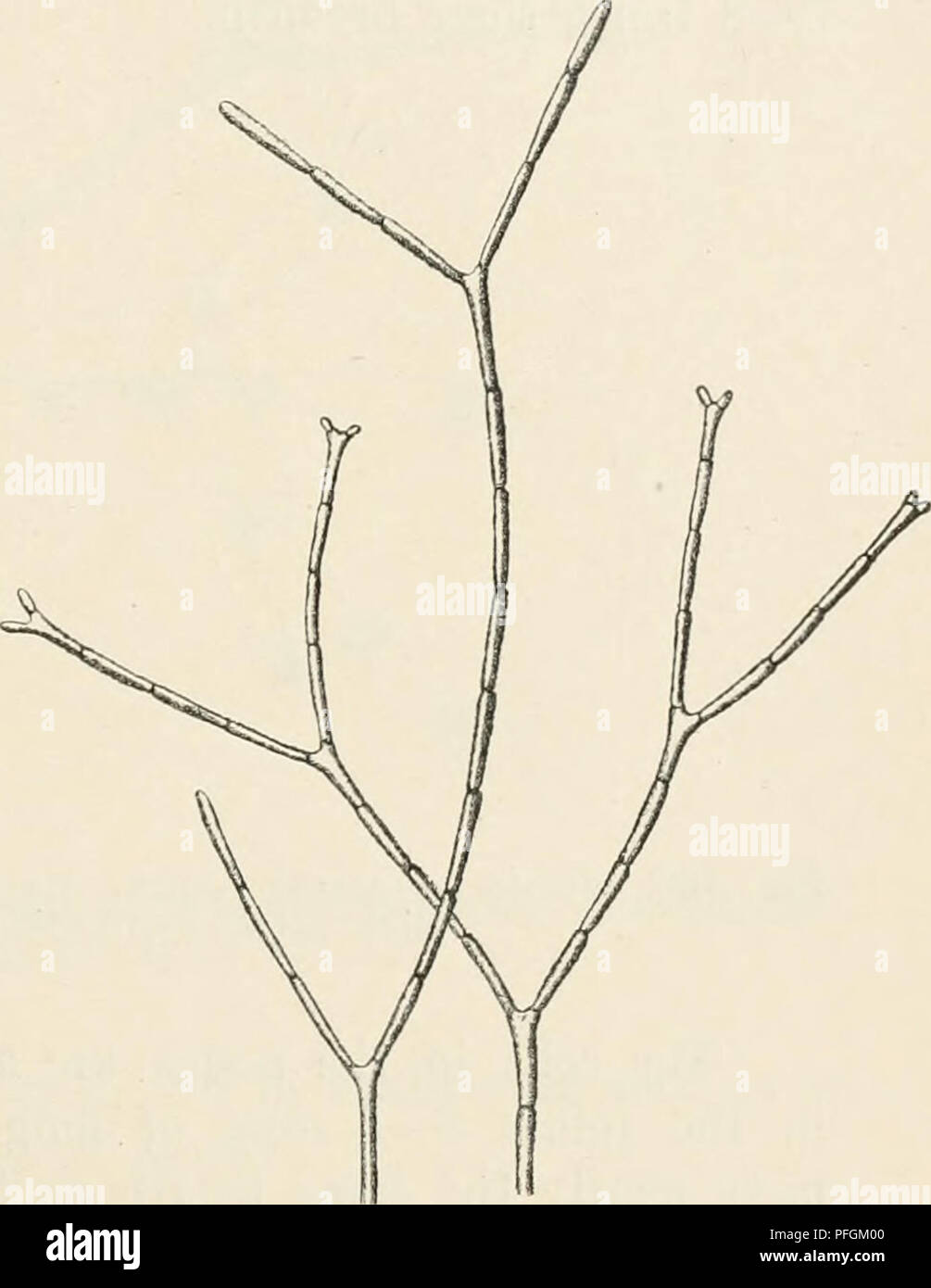. Dansk botanisk arkiv. Plants; Plants -- Denmark. Fig. 184. Jania adhaerens Lamx. Habit of a specimen. (About 7 :1).. Fig. 185. Jania adhaerens Lamx. Upper ends of fdaments showing the regular dichotomy. (About 20 :1). proportion to breadth etc., but nevertheless it seems very natural to me to take them together, as transitional links are found between them and they, most probably, are nothing but variations of the same plant due to differences in habitat. The plant grows upon stones, corals or similar substrata or intertwisted among other Corallinaceæ, e. g. Amphiroa fragilissima or epiphyti

Image details
Contributor:
Central Historic Books / Alamy Stock PhotoImage ID:
PFGM00File size:
7.1 MB (123.7 KB Compressed download)Releases:
Model - no | Property - noDo I need a release?Dimensions:
1390 x 1797 px | 23.5 x 30.4 cm | 9.3 x 12 inches | 150dpiMore information:
This image is a public domain image, which means either that copyright has expired in the image or the copyright holder has waived their copyright. Alamy charges you a fee for access to the high resolution copy of the image.
This image could have imperfections as it’s either historical or reportage.
. Dansk botanisk arkiv. Plants; Plants -- Denmark. Fig. 184. Jania adhaerens Lamx. Habit of a specimen. (About 7 :1).. Fig. 185. Jania adhaerens Lamx. Upper ends of fdaments showing the regular dichotomy. (About 20 :1). proportion to breadth etc., but nevertheless it seems very natural to me to take them together, as transitional links are found between them and they, most probably, are nothing but variations of the same plant due to differences in habitat. The plant grows upon stones, corals or similar substrata or intertwisted among other Corallinaceæ, e. g. Amphiroa fragilissima or epiphytically upon larger algæ, especially Digenia, stems of Halimeda, Avrainvillea etc. 13*. Please note that these images are extracted from scanned page images that may have been digitally enhanced for readability - coloration and appearance of these illustrations may not perfectly resemble the original work.. Dansk botanisk forening. Kbenhavn : Dansk botanisk forening